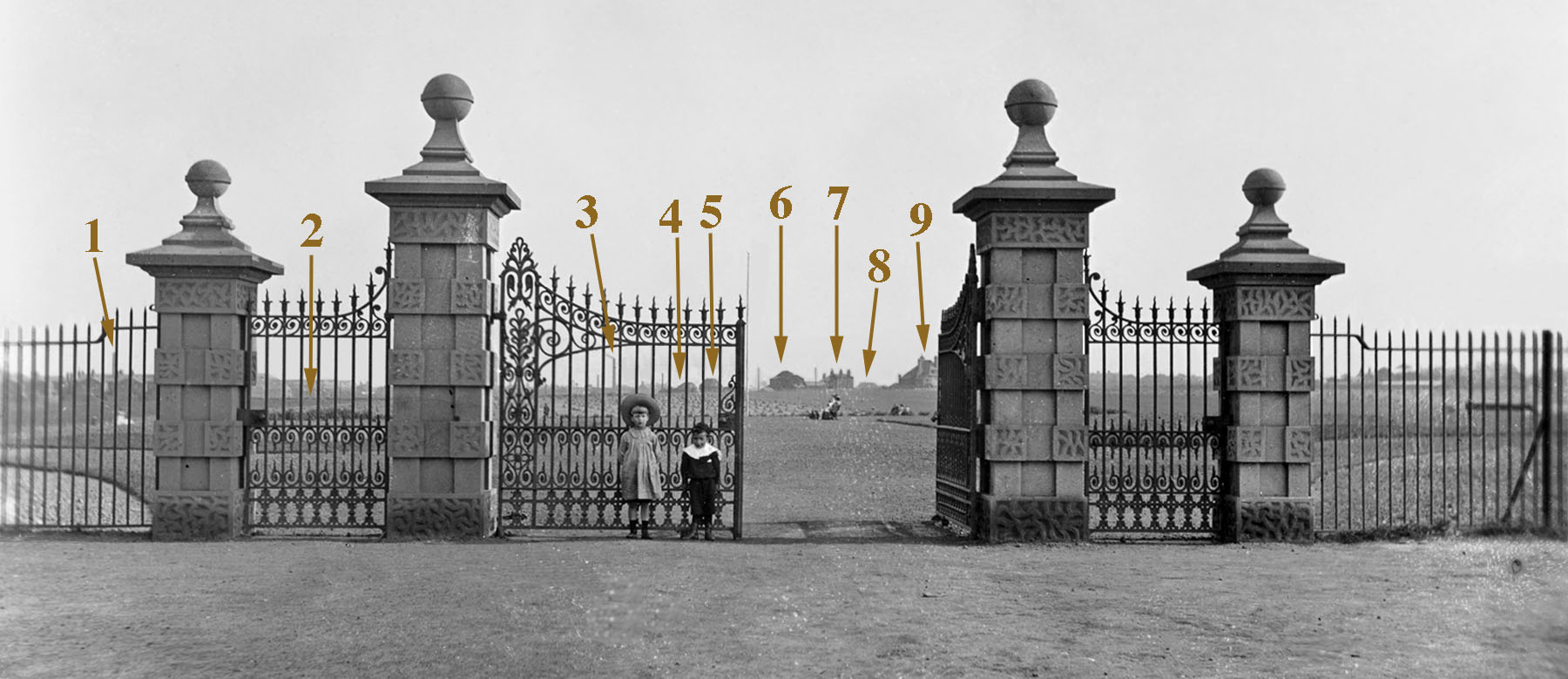An Illustrated History of Old Sutton in St Helens, Lancashire
Part 49 (of 95 parts) - How Sutton Has Changed
Edgeworth Street | Lea Green | Mill Dam and Community Action
Researched and Written by Stephen Wainwright ©MMXX Contact Me
How Sutton Has Changed - Introduction
Edgeworth Street | Lea Green | Mill Dam Action
Researched & Written by Stephen Wainwright ©MMXX
How Sutton Has Changed - Introduction
Old Sutton in St Helens
b) Sutton Manor Village
c) Edgeworth Street
d) Changing Lea Green
e) Mill Dam Action
Introduction

However, Sutton throughout the centuries of township status and 140 years of being incorporated into the St Helens Borough, could always have been described as picturesque to some extent. During Sutton's large-scale industrialisation of the nineteenth century, it had retained a mix of industrial areas and coal mines, juxtaposed with some residential areas and large areas of farmland plus other open space. But the balance between them was shifting, which continued throughout the 20th century.
There was an ever increasing need for new housing for the burgeoning Sutton population. During the nineteenth century, accommodation was often built near to the local works, to house the workers and their families. With a more mobile twentieth century workforce who used buses and cars, tied housing was no longer needed. However, more residential estates were required for those who chose to live in the Sutton district and then commuted into St.Helens or out of town for employment. As large acres of farmland and open space disappeared through the industry of builders, so the landscape changed.
As we all have a tendency to accept our surroundings with little thought as to what had existed before, this page will attempt to describe the changes to Sutton's topography and landscape and, to a lesser extent, social life, between the late nineteenth and early twenty-first centuries.
New Street / Marshalls Cross Estates
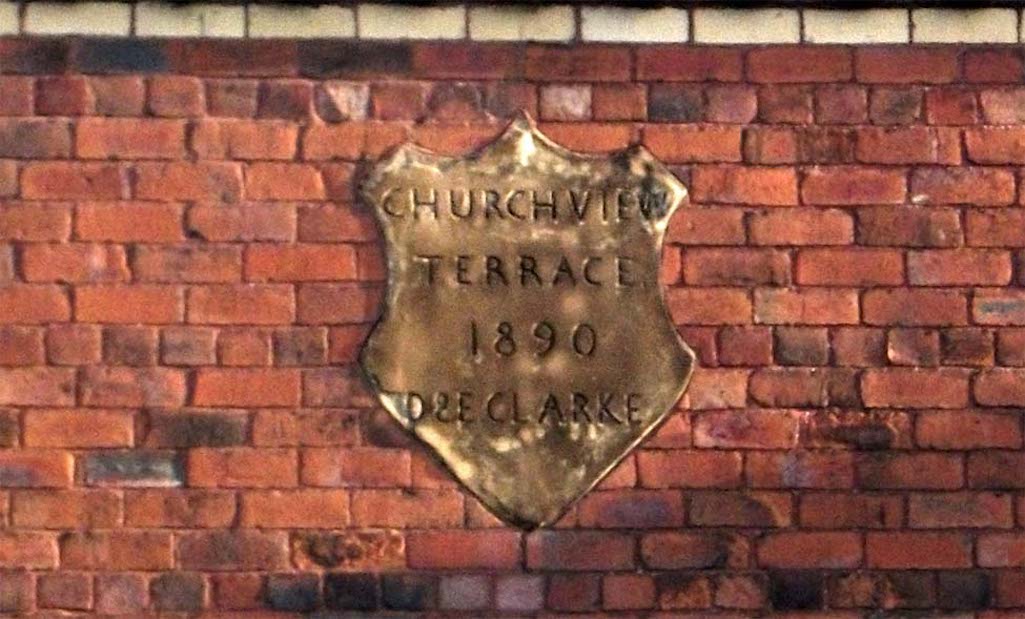
Date plaque on a house at the top of Robins Lane opposite Sutton Park photographed in 2013

Date plaque on a house at the top of Robins Lane opposite Sutton Park

Date plaque on a house in Robins Lane
In those days most of the district surrounding Sherdley Park and New Street was agricultural land or open fields, with much of it part of the Sherdley Estate. The above date plaque on a house in Robins Lane, near its junction with Marshalls Cross Road, bears the name Church View Terrace. When built in 1890, there would have been an unobstructed view of St.Nicholas Church, almost a mile away. However a combination of growing trees in the soon-to-be created Sutton Park and 20th century housing developments would obviate much, if not all, of the view.
There were then only a handful of roadways by New Street comprising Marshalls Cross Road to the west, Robins Lane and Ditch Hillock to the north, Gerards Lane to the east and Thieves Lane and Mill Lane to the south. These were then much more sparsely populated than they are today. In December 1887 a petition (known as a memorial) was submitted to St.Helens Town Council by Sutton councillors and residents calling for New Street to be illuminated.
Members of the St Helens Corporation’s Gas and Lighting Committee visited New Street but considered it to be just a country lane with fields on each side and not worthy of being lit. They said that the installation of a gas mains connection, plus lampposts, would cost over £300, which would not be viable. The committee reported that apart from at the beginning and end of the street, there were only a couple of houses within its ¾ mile length.
The supporters of lighting New Street argued that it might not be very well populated but it was a main thoroughfare used by many pedestrians and carts. Councillor Greenough stated that it had more traffic in Sutton than any other road, apart from Sutton Road. In the middle of its length the street followed the shape of the letter ’S’, which was especially hazardous to commute without lighting. Further evidence as to the low population in New Street is provided by the 1891 census, which reveals only 20 houses populated by a total of 92 people.
That same year the council agreed to fill up a four-feet wide ditch in New Street as well as straighten and widen the road, so as to allow two carts to pass. Cllr. Greenough told a meeting how a hearse had been travelling to St.Nicholas Church for a funeral when it met a cart travelling in the opposite direction. It ended up stuck in the ditch and the deceased’s friends had to get out and push the hearse back onto the road.
The scheme to improve New Street cost £250, which included £50 for Michael Hughes of Sherdley Hall, who owned most of the land, to undertake some fencing. New Street, incidentally, belies its name, having existed for around 200 years and is shown on Greenwood's 1818 Map of Lancashire. Although a stretch between the bridge and Mill Lane was originally known as Workhouse Lane.
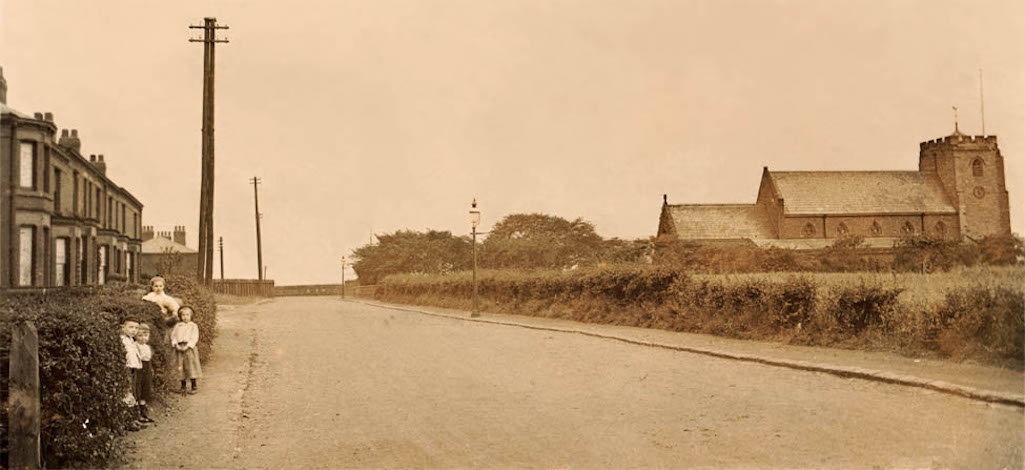
The remarkable southerly view from the park gates extends a full two miles towards Turner’s Glass Works off Reginald Road, which a decade later would be the site of the Sutton Oak Chemical Defence Research Establishment. In comparison a 21st century view from the same camera position is considerably inhibited by trees and only extends 100 yards or so into the park.
These are some of the background sights marked on the photograph that a park walker could have observed in 1906: 1. The former Sutton Glass Works in Lancots Road, which closed in 1903
2. Embankment for the St.Helens to Widnes Railway as it journeyed to the Intersection Bridge
3. Turner Glass Works, later Sutton Oak C.D.R.E., a.k.a. the ‘Magnum’
4. New Street Farm (later known to some as Eddie Rimmer’s Farm) then Joe Heyes’s
5. Sutton Vicarage (now the site of Elizabeth Court Care Home)
6. Yew Tree Cottage in New Street
7. Houses between Eaves Lane and New Street Bridge (as shown above)
8. The farmer Heyes family’s barn
9. St Nicholas Church and Ivy Cottage at the top of Eaves Lane - Larger Version
Below is an Ordnance Survey map, which was surveyed in 1905 / 6 and reversed to match the southerly perspective of the park picture:
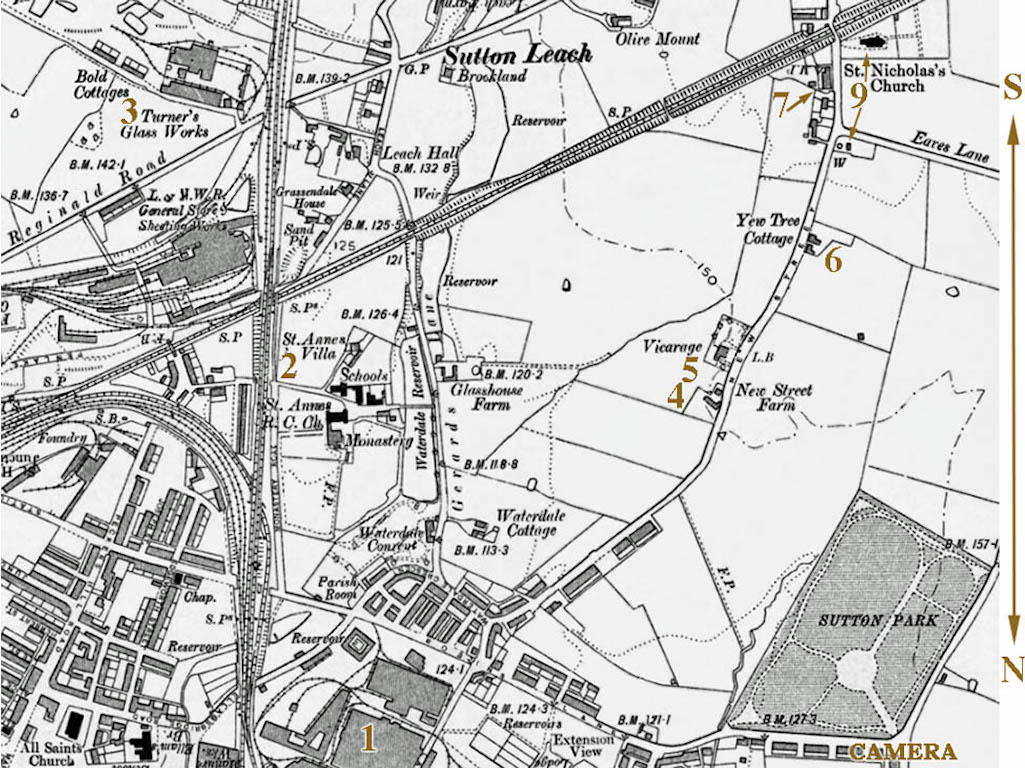
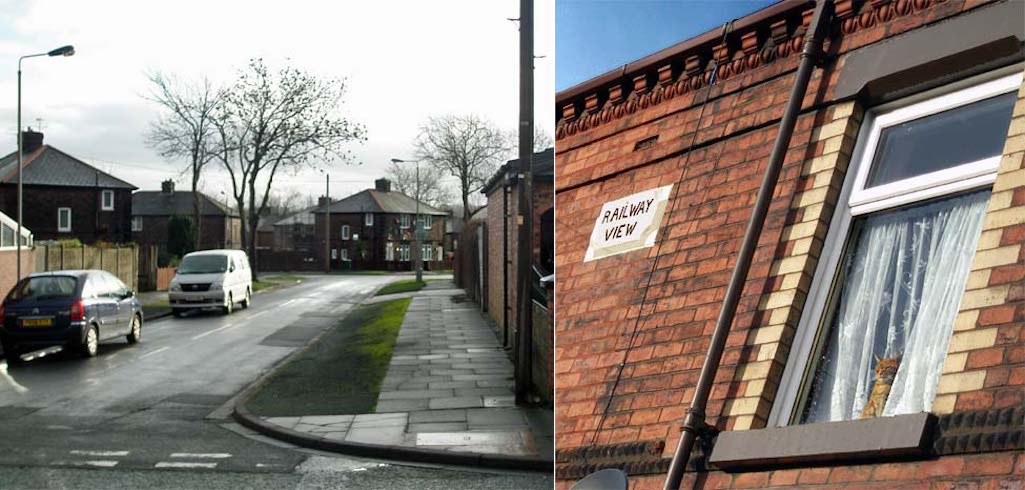
A cat stares out of the window of Railway View in New Street (right) but has no chance of watching trains

A cat stares out of the window of Railway View in New Street in Sutton

Railway View in New Street (on right)
In late 1927, building work began on creating Dawson Avenue, which connects to Gerards Lane. Occupation began the following year and an elderly resident who talked to me as I took the above photographs, said they had a great view then of the steam trains on the busy line. However, the new houses shielded Railway View from living up to its name, although some gaps in the housing on the opposite side of New Street may have permitted some glimpses.
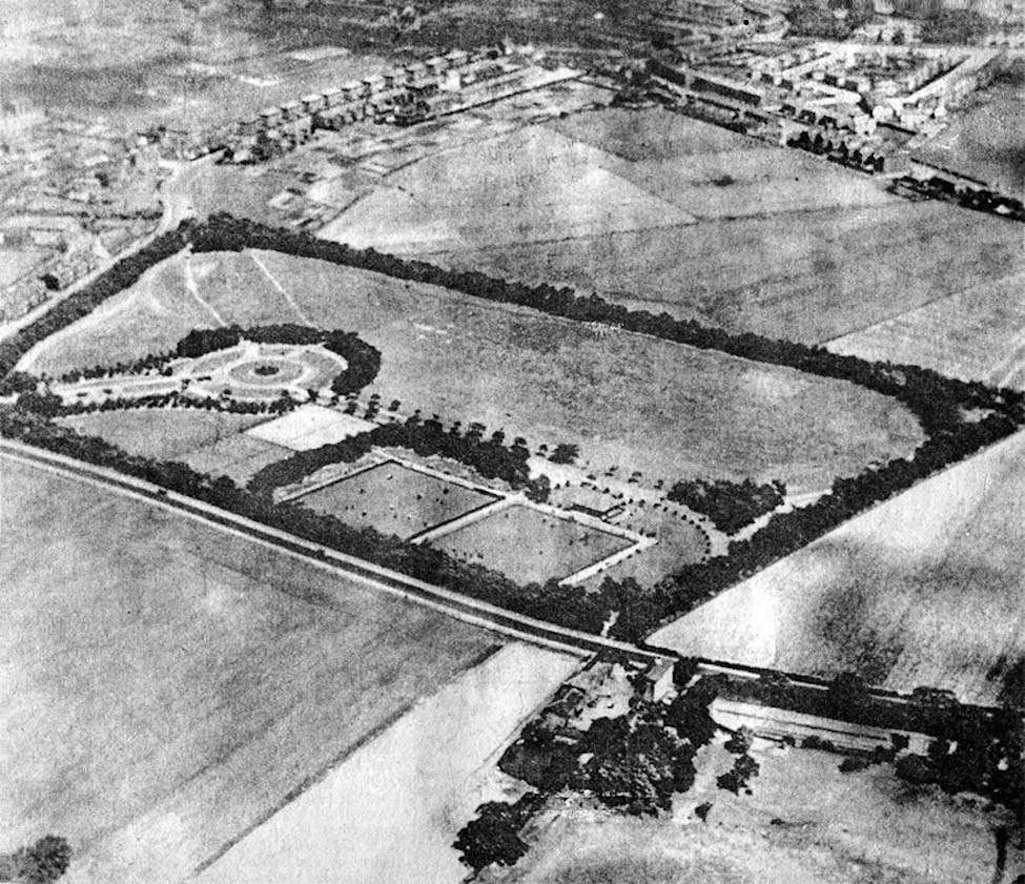
An aerial view of Sutton Park with its prominent bowling greens and with Sherdley Park in the foreground

An aerial view of Sutton Park with its prominent bowling greens

An aerial view of Sutton Park
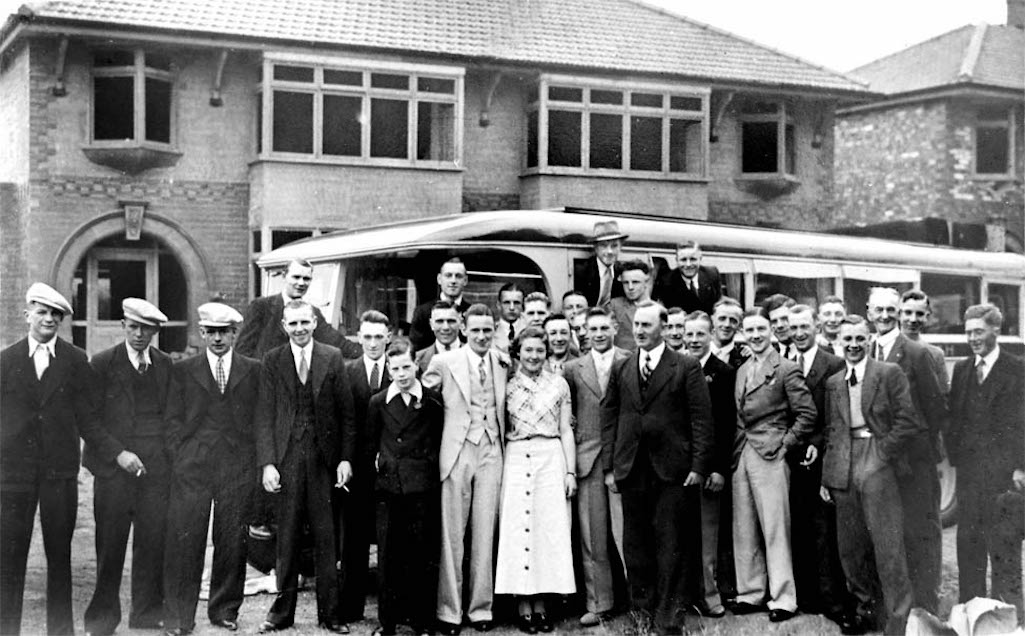
Kenwright works outing from 1935 taken outside the newly-built 1 Marina Avenue - Contributed by Norris Kenwright

Kenwright works outing from 1935 outside the newly-built 1 Marina Avenue

Kenwright works outing from 1935
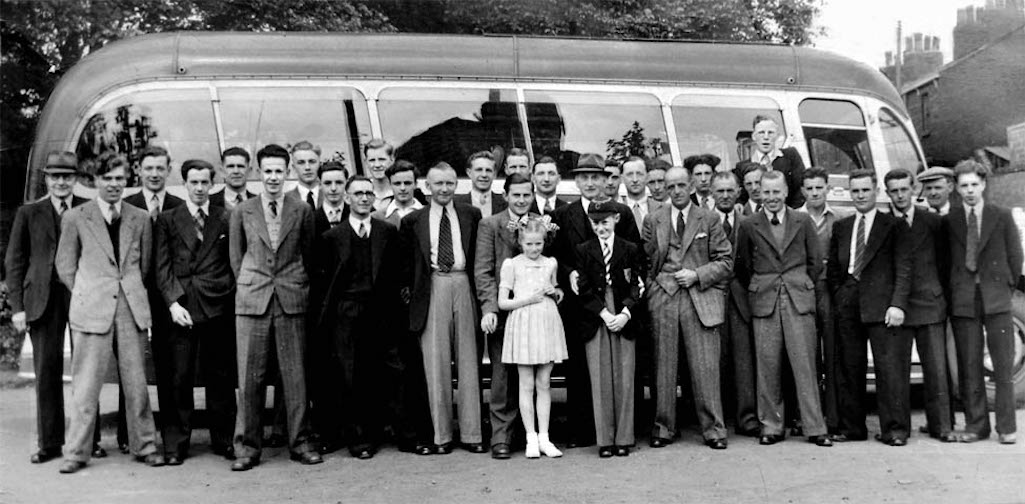
A.J. Kenwright & Co. works outing to Blackpool from 1948 - Contributed by Norris Kenwright

A.J. Kenwright & Co. works outing to Blackpool from 1948

Kenwright’s works outing from 1948
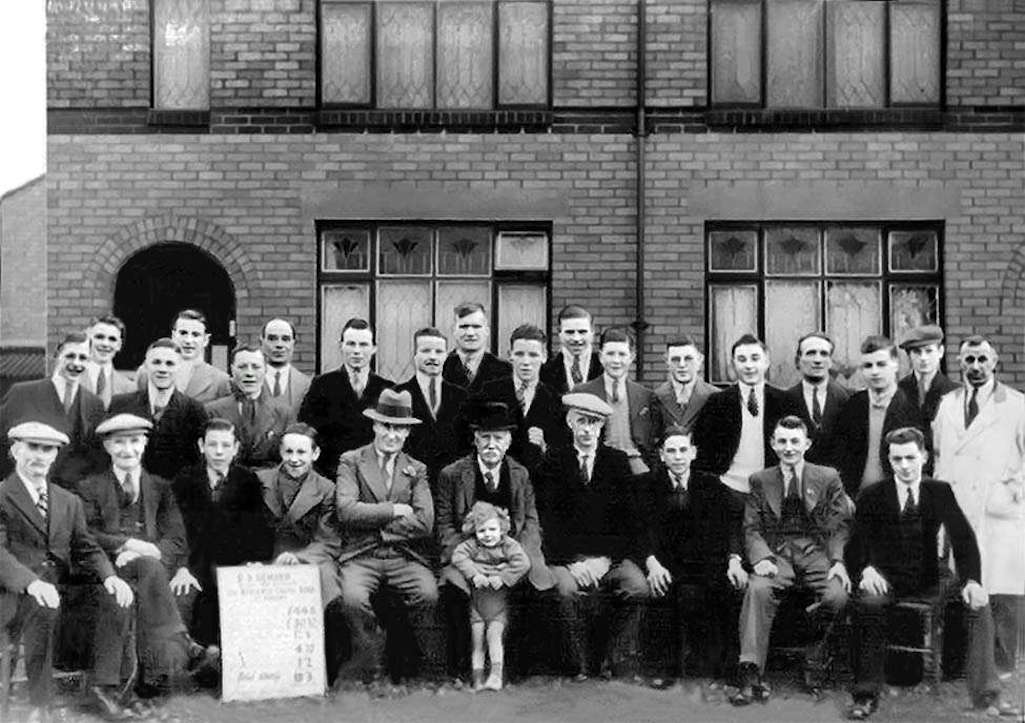
The Hewards and employees in 1938 in front of New Street houses that they’d built - Dick Heward is on the front row wearing a trilby

The Hewards’ employees in 1938 in front of New Street houses that they’d built

The Hewards and employees in 1938
He knew he wouldn't be able to stave off 'progress' after his death, but he did what he could to protect the character of the area while he was still alive. Colonel Hughes disliked much of modern life with aversions to electricity, telephones, motor cars, cinemas and wireless sets. He died in 1938 and by then the world was a very different place to the one whose Victorian values he so espoused.
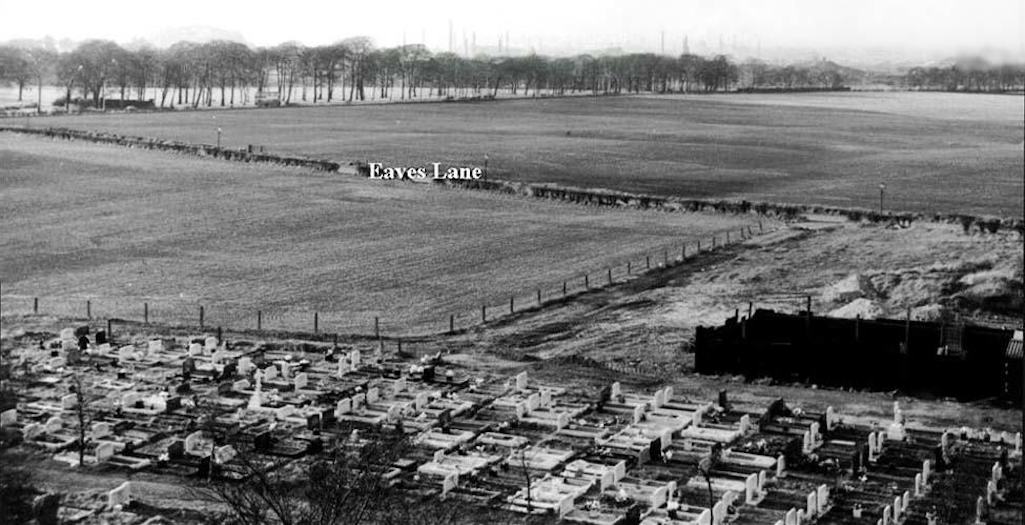
A north-west view from 1964 with graveyard in the foreground and Sherdley Park in the background - contributed by Jim Lamb

A 1964 view with graveyard in foreground and Sherdley Park in the background

View from St.Nicholas Church in 1964 with graveyard in the foreground
The picture above looks north / north-west of the New Street church with Marshalls Cross Road and Sherdley Park at the top left. There's nothing but fields past the graveyard and burnt out cub huts with Eaves Lane looking quite desolate.
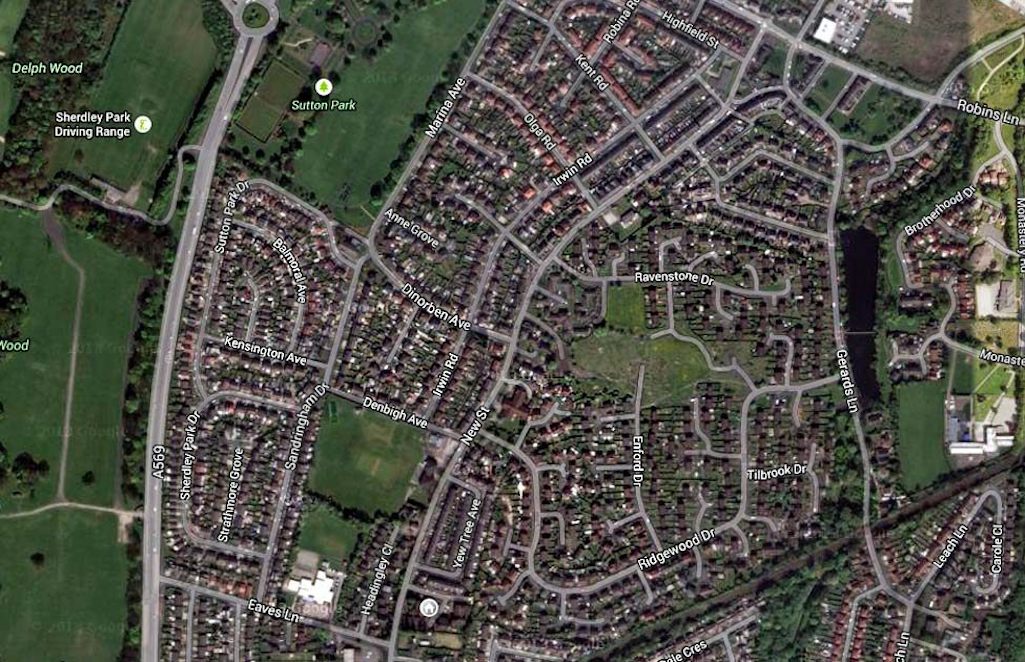
With two parks very close to the new residential development, there was no question of the area becoming too built-up. Indeed Hughes-Young's uncle, the then Captain Michael Hughes, had insisted on Sutton Park being protected when he sold it to St.Helens Council in 1903. Amongst several caveats, a clause was inserted into the sale agreement preventing the use of 'steam-driven merry-go rounds and whistles' in the 20 acre park. (See: Michael Hughes, Sherdley Estate and Sutton Park pages)

St.Helens Reporter account of the sale of former Sherdley estate land for the building of a housing estate (30/7/1966)

St.Helens Reporter from 30/7/1966 on the sale of former Sherdley estate land

St.Helens Reporter account 30/7/1966
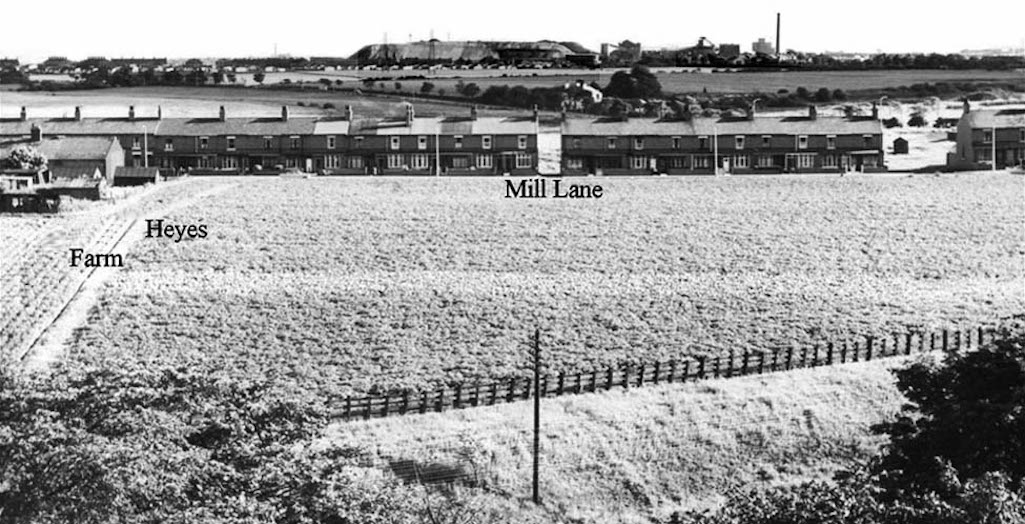
Looking south from St.Nicholas towards Mill Lane and Sutton Manor Colliery in 1963 - contributed by Jim Lamb

Looking south towards Mill Lane and Sutton Manor Colliery in 1963

Looking south towards Mill Lane
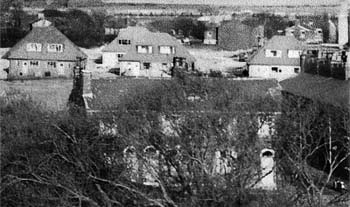
An exception to the residential nature of the area is Sherdley Primary School and its playing fields, although the site has previously been inhabited. Initially Sutton Workhouse existed there and when the railway bridge in New Street was constructed in 1830, it was known as Sutton Workhouse Bridge and the stretch of road to it from Mill Lane was called Workhouse Lane. In the 1841 census there were 77 people living in Sutton Workhouse, including two staff. However it closed in 1843 with inmates transferred to the newly-built Prescot Union workhouse at Whiston.
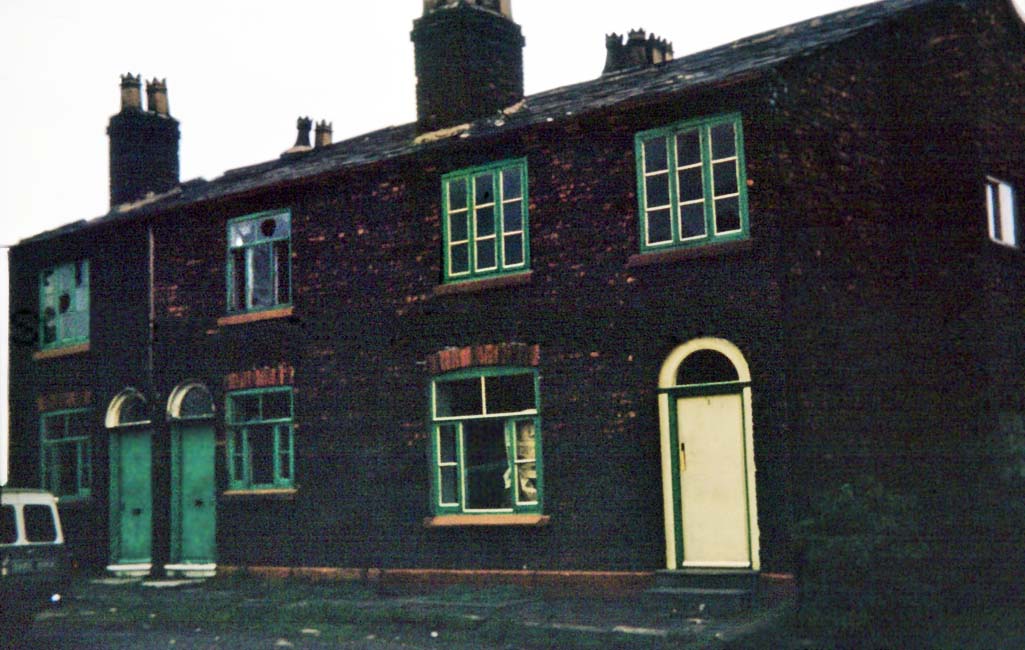
Photograph of a three house section of Graces Square which was taken around 1960 by Miss C. M. Fazackerley

A three house section of Graces Square taken around 1960 by C. M. Fazackerley

Section of Graces Square c.1960
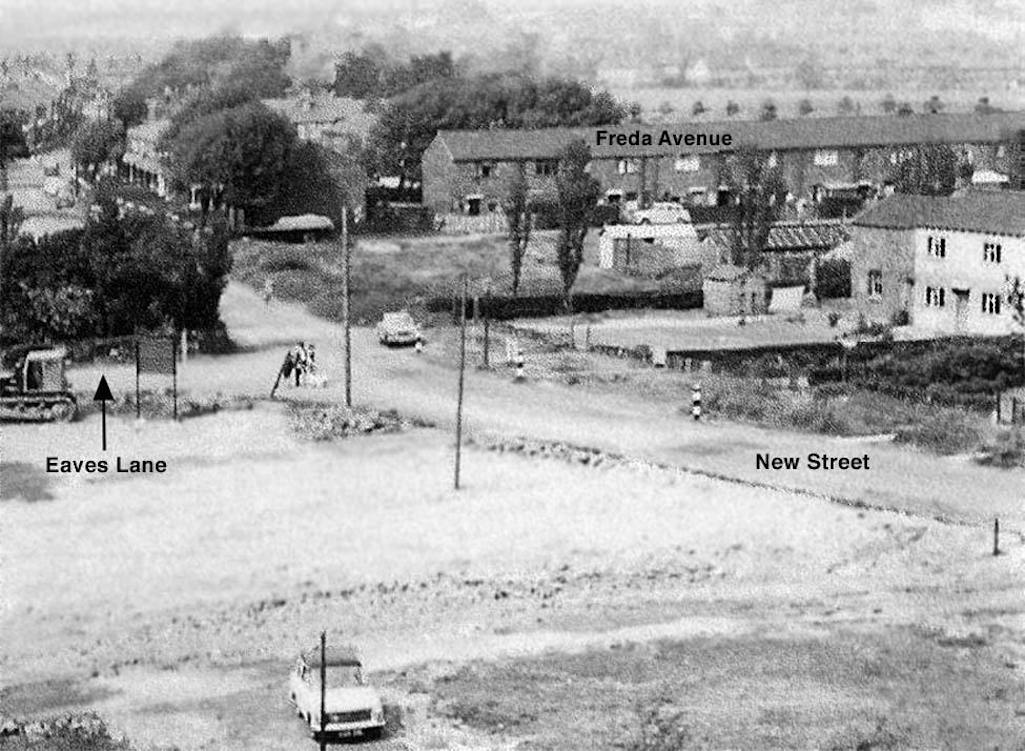
This 1963 enlarged image shows the field in front of Freda Avenue that became Holbrook Close - contributed by Jim Lamb

This 1963 enlarged image from a photo taken by Jim Lamb shows the field in front of Freda Avenue (top right) that in 1983 became Holbrook Close

The field in front of Freda Avenue (top right) became Holbrook Close in 1983
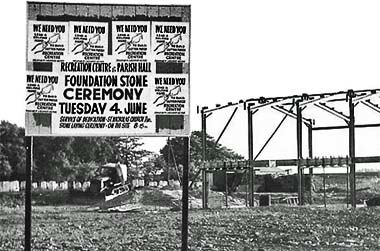
Pavements have also been added to this stretch of New Street. Note the lack of them on the top photograph with two people walking a dog in the middle of the road! The picture on the right was taken by Jim Lamb six days earlier and reveals the frame of the parish hall. The sign is the same one that's depicted in the above picture, located in between the dog walkers and the arrow pointing to Eaves Lane.
The area between New Street and Gerards Lane has undergone the most drastic change with the acres of farmland replaced by what is still locally referred to as the 'Beth Avenue' estate. The Dawson Avenue development of 1927-8 was the starting point for this residential expansion but it was small in comparison with the hundreds of homes that would be built during the early ‘70s. This new build extended the short street of Beth Avenue - that had been constructed by the Hewards during the 1930s - to Gerards Lane across acres of brown and green land.
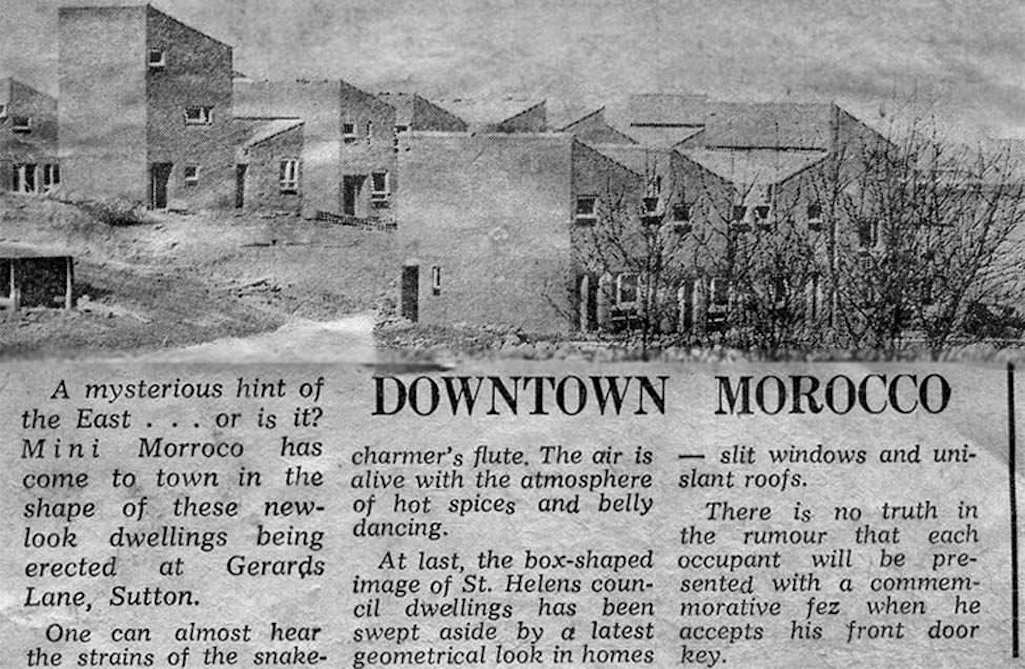
The St.Helens press dubbed Beth Avenue Downtown Morocco - newspaper and date unknown

The St.Helens press dubbed Beth Avenue in Sutton ‘Downtown Morocco’

The St.Helens press dubbed Sutton’s Beth Avenue Downtown Morocco
Beth Avenue and Eugene Avenue occupied separate halves of the same horseshoe that stretched from one side of the estate to the other. The houses were given the nickname of 'Legoland' and their build was said to be a factor in the area's high crime rate. During the 1990s, the three-storey / bungalow combination houses within the estate were demolished and the distinctive tops of the remaining houses were removed and replaced by traditional roofs. Both streets were renamed Ridgewood Drive, although the Beth Avenue moniker still lingers.
Despite these large-scale housing developments, the residents of the New Street district have plenty of opportunity for recreational activity with the delights of Sutton Mill Dam, Sherdley Park and Sutton Park on their doorstep.
Sutton Manor Village
Of all Sutton's industries coal mining was king, shaping both life and landscape in the former township. In fact Sutton Manor as we know it today, is entirely down to the creation of the coal mine that gave the village its name. Prior to the colliery's arrival, effectively in 1912 when production began in earnest, the land was agricultural with the only dwellings being scattered farms apart from St. Michael's House. This was located at the junction of Walkers Lane, Chapel Lane and Lea Green Road and was a moated sixteenth century house.The only industry of note in the district was the Brook Works (a.k.a. Brook Mills) of Rawlins and Sons of Micklehead Green who made smalt. A small number of cottages were built in Walkers Lane to house their workers and a schoolroom was attached to the works to educate the children. Apart from these few buildings, the landscape was agricultural open space for miles around.
However, by 1914 Sutton Manor Colliery was winding 700 tons of coal a day and as the Times pointed out: ‘A town has sprung up where a few months ago there were only fields’ (4/2/1914). People flooded in to work at the pit from other parts of St.Helens, Wales, Scotland, Ireland and the Yorkshire coalfields. Some came from even further afield with two families from Lithuania and a high caste Hindu, Mr. Ram, who as a colliery surveyor lived with his manservant at 3 Tennyson Street.
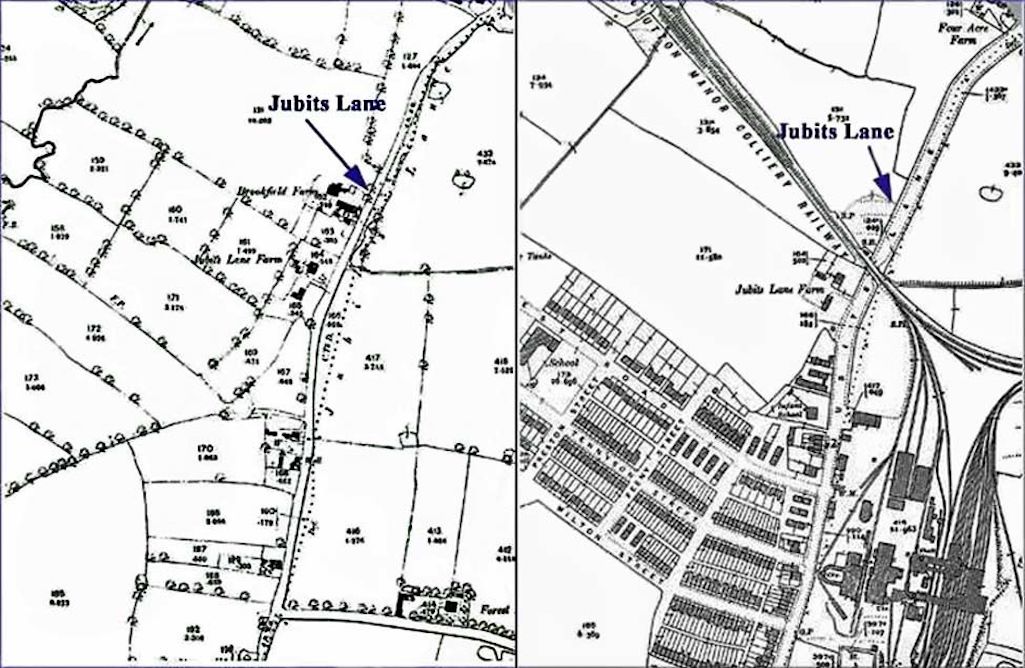
In 1893 (left) what became Sutton Manor had just a few farms - by 1937 there is a mix of agricultural, residential & industrial land

In 1893 (left) what became Sutton Manor had just a few farms - by 1937 (right) there is a mix of agricultural, residential and industrial land

1893 and 1937 maps of Sutton Manor
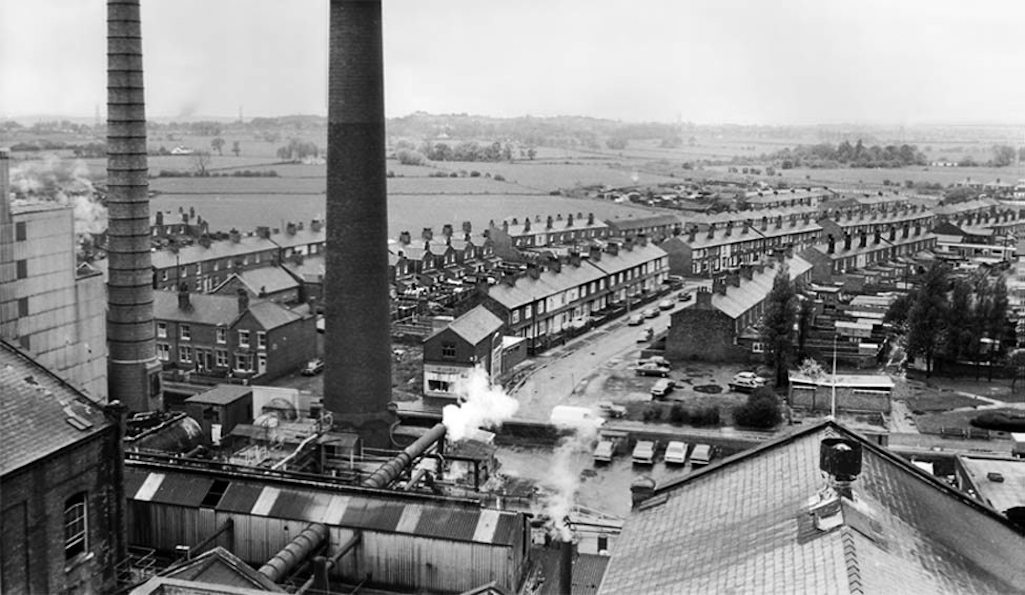
A view from No.1 headgear of Sutton Manor Colliery looking down Tennyson Street

A view from Sutton Manor Colliery looking down Tennyson Street

Tennyson Street in Sutton Manor
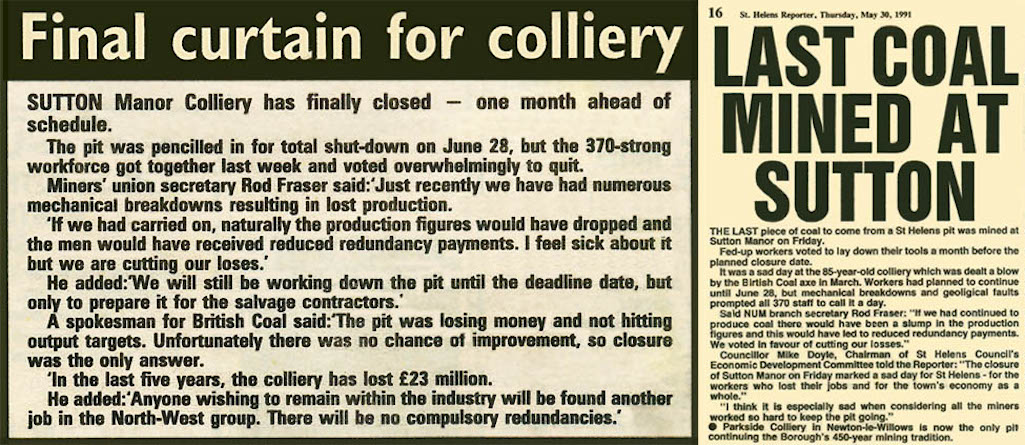
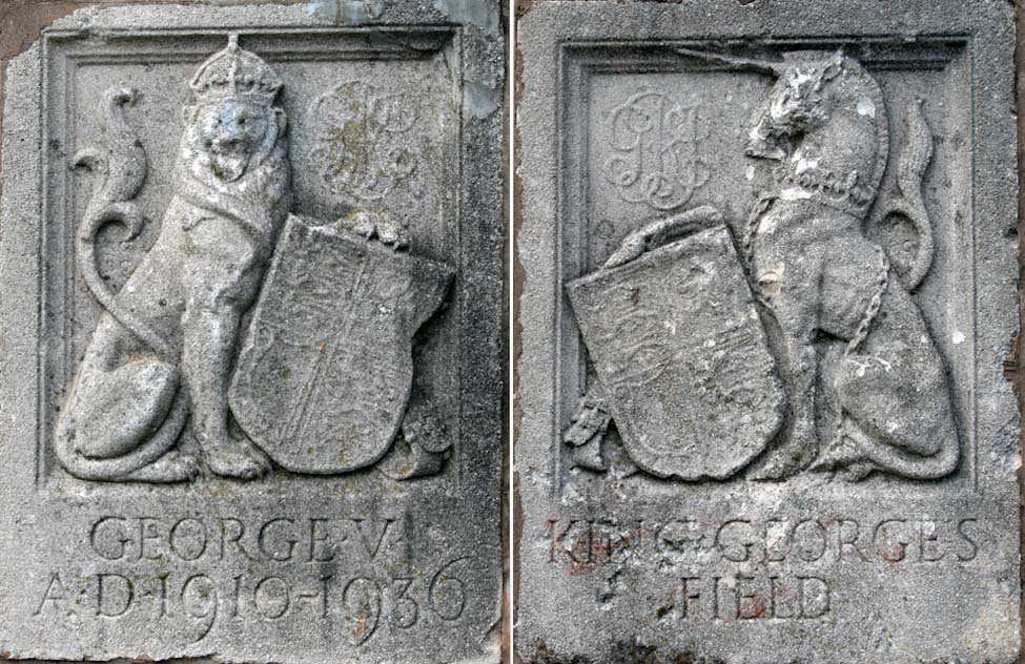
Plaques at the entrance to the King George V Playing Fields in Sutton Manor opposite the former colliery site

Plaques at the entrance to the King George V Playing Fields in Sutton Manor

King George V Playing Field plaque
New housing estates have been created in Sutton Manor during the latter half of the 20th century. About 1970, Delamere and Epping Avenues and Dean Way were built on the former farmland site of Jubits Lane Farm, just north of Forest Road, creating many new homes. Although the possibility of subsidence may have been a factor in deterring new builds on the old colliery site, it's clear that there's been a strong desire to retain a sensible mix of housing and open space within Sutton Manor.
Edgeworth Street
Frank Bamber was born at 64 Edgeworth Street in 1910 and in the first edition of the Sutton Historic Society's publication 'Sutton Ramblings' in 1989, he described how he'd recently found himself in the street of his birth one Saturday morning but was not impressed by what he saw: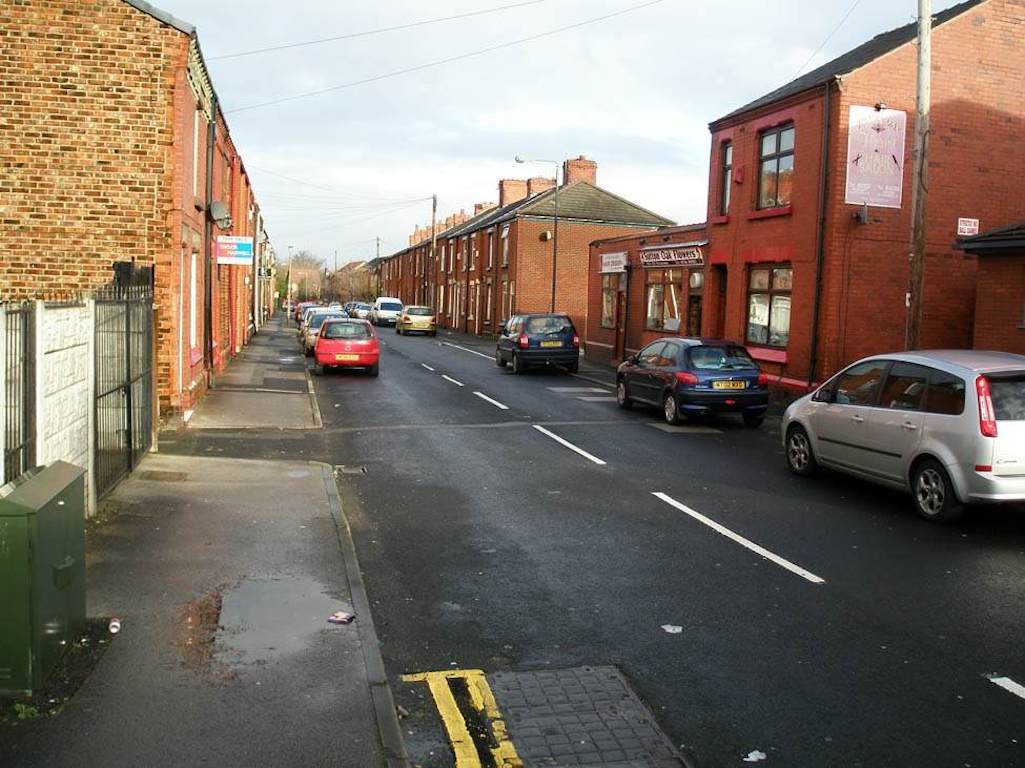
Edgeworth Street at 11:30am on a Saturday morning in November 2009, with no children playing as in Frank Bamber's day

Edgeworth Street at 11:30am on a Saturday morning with no children playing

Edgeworth Street at 11:30am - no kids
Frank recalls that there used to be eight shops, mainly grocery and sweet shops, that were essentially converted front rooms of houses. There was Miss Jones at number 58, then Mrs. McVitie at 74, Mrs. Beasley at 88, Fred Hill at 31 and Millie Price's pork shop at no. 51. At no. 73 was a large dairy run by John Davies which had stables for four ponies and an enclosure for milk floats. There was also a Methodist chapel, Conservative Club, Little Pig pub and close by was Fletcher's slaughterhouse, Phoenix Brewery, Providence Foundry and the Showground where entertainment was staged. Frank again:
This website was not created to undertake such socio-economic analyses. However, Frank's reminiscences vividly bring old Sutton to life, which is very much part of Sutton Beauty & Heritage's remit!
How Lea Green Has Changed
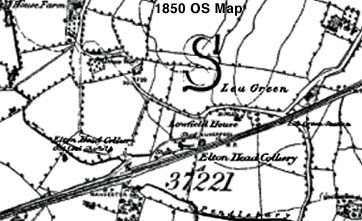
The main occupations in Lea Green have traditionally been farming and coal mining. The latter dates back far further than the 19th century, with the Eltonhead family extracting coal in different parts of Sutton Heath and Lea Green from 1540. Their mining was initially opencast and it was said that local people had to exercise care when out walking as the ground often gave way and swallowed them up!
The 1849 Ordnance Survey map shows Elton Head Colliery adjacent to the Liverpool to Manchester railway line in Lea Green. A number of disused coal shafts are also marked on the map. However by the 1892 OS, Elton Head Colliery vanishes and Lea Green Colliery off Lowfield Lane makes an appearance. From about 1870 clay was extracted from what became known as the Lord St.Helens North and South quarries, adjacent to Lea Green Road and Fog Cottages. This was used by Roughdale’s Brickworks to make bricks, chimney pots, pavings and pipes.
However the Lea Green clay may have been used much earlier to make pottery. In 2002 archaeologists from Liverpool Museum unearthed a large haul of 15th and 16th century pottery on the site of Big Lea Green Farm. Their find included 15th century storage jars, clay pipes and cups. The expert team believe that people had been living on the site off Lea Green Road since the 1400s.
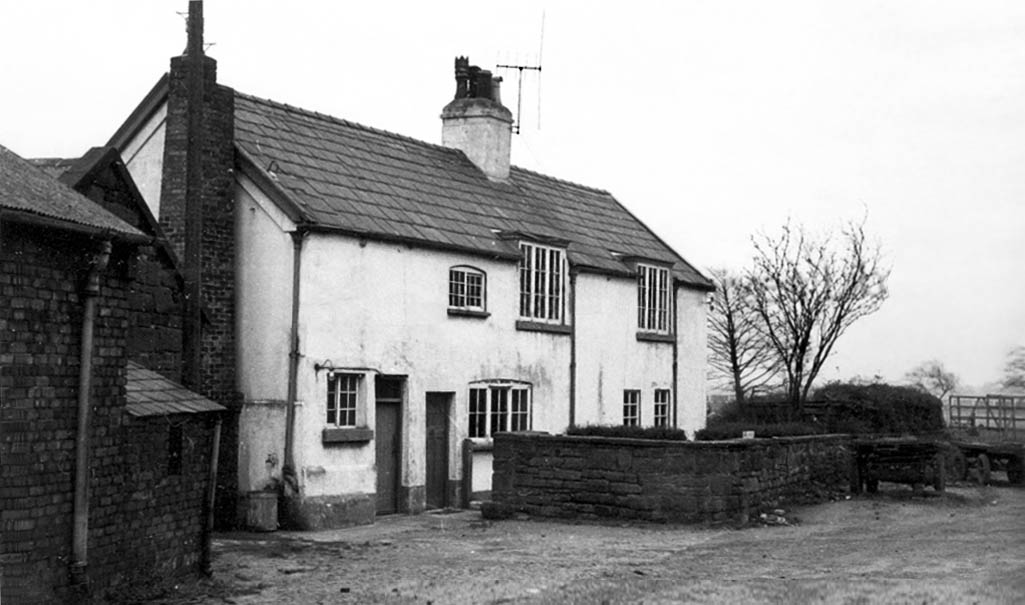
The very old residence of Eltonhead Hall photographed in 1960 by Frank Sheen and situated next to Eltonhead farm

The very old residence of Eltonhead Hall in 1960 situated next to Eltonhead farm

The old residence of Eltonhead Hall
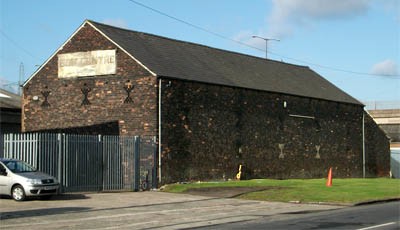
For much of the 19th and 20th centuries, Lea Green was synonymous with its railway station, as well as the colliery. The Rainhill Trials took place through the district and the station opened in 1830 and closed for good in 1958 (the present Lea Green station which opened in 2000 is really in Marshalls Cross). Sadly there are no known photographs of the historic station.
So how has Lea Green changed? In a sentence mining and farming has been replaced by private enterprise and residential development. The colliery’s closure in 1964 did not hit Lea Green as hard as pit closures in other parts of St.Helens. In part this was through there only being a small local population. Although in those days redundant miners easily transferred to other pits. The railway station’s closure a few years earlier had been similarly uneventful. Farming became the main occupation but has now died out. One or two farm buildings and farm names have continued but now have other uses.
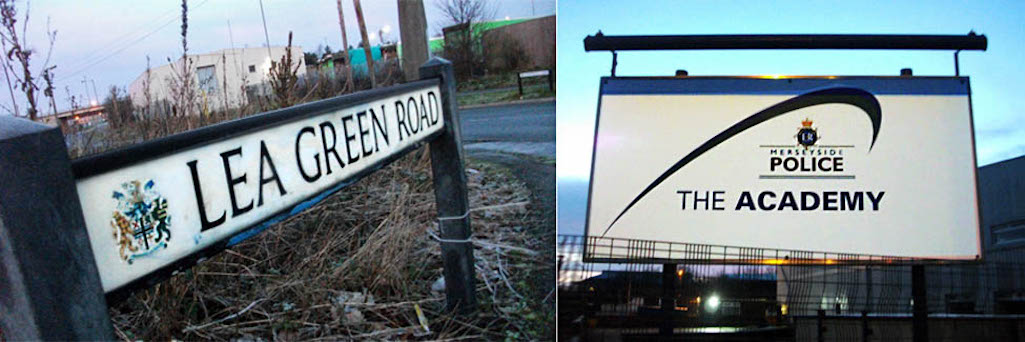
Left: Street sign with the Co-Op Distribution Centre in background; Right: Lea Green Police Training Centre

Left: Street sign; Right: The Lea Green Police Training Centre

Right: Lea Green Police Training Centre
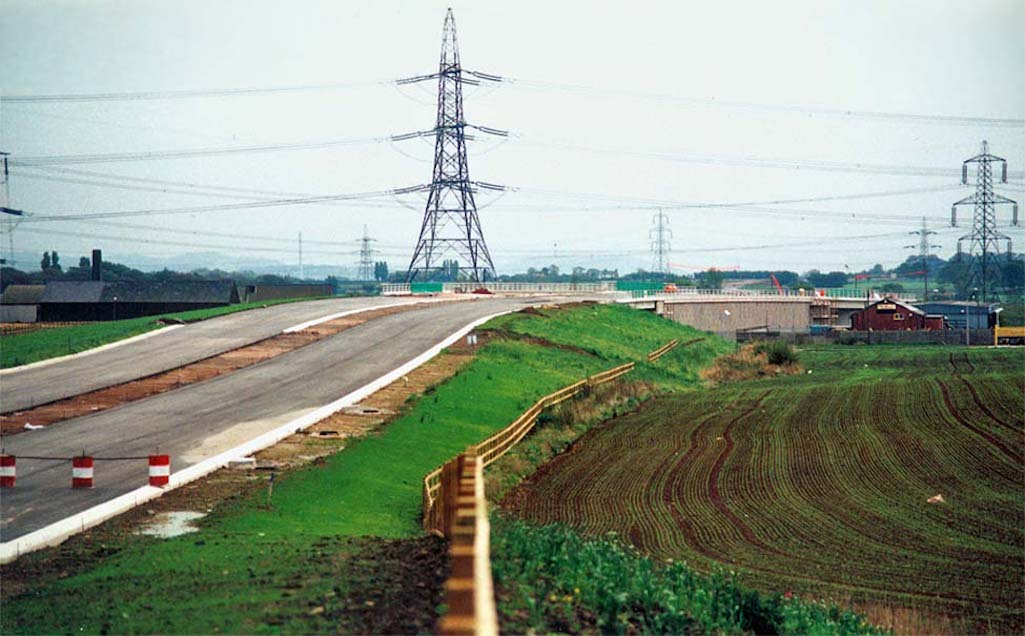
The building of the St.Helens Linkway (A570) at Lea Green in October 1992 - Contributed by Jim Lamb

The building of St.Helens Linkway (A570) at Lea Green in October 1992

Building of St.Helens Linkway in 1992

Left: Farmhouse at Big Lea Green Farm in 1903; Right: Now the site of the Co-operative Distribution Centre

Left: Big Lea Green Farmhouse in 1903; Right: Co-op Distribution Centre

Big Lea Green Farmhouse and the Co-operative Distribution Centre
As well as a shift from coal mining to private enterprise, the second major change has been a move towards housing estates. For the last few years Morris Homes have been busy creating an ‘urban village’ on the former site of Lea Green Colliery and Lowfield Industrial Estate. The development is roughly the size of 30 football pitches and the build will eventually see 700 homes plus a lake. There are a number of open brown and green field areas in Lea Green. So it’s likely that this will only be the start of a residential and business expansion of a district that’s steeped in history.
Sutton Mill Dam & Community Action
As the housing estate expansion developed, so the local community became increasingly concerned for the protection of its green and open spaces. The story of Sutton Mill Dam is a good example. The cellophane manufacturer British Sidac, who'd been in Sutton since 1934, had ownership of the historic lake and Dam, which had originally powered a corn mill. Deterioration had occurred since the war with much siltation of the water.Then in the early 1960s there was subsidence at the head of the Dam which, combined with the silt, served to reduced the water capacity. In 1976 Sidac applied for permission to fill it with inert waste. Brian Spencer, the recent leader of St.Helens Council, and his wife began a campaign to stop the dumping and whilst out petitioning bumped into neighbours who were also collecting signatures for their own petition. They joined forces, meetings were arranged and the Sutton Mill Dam Action Group was formed.
After lengthy negotiations, St.Helens Council acquired Sutton Mill Dam as well as Monastery Dam for a nominal sum. The original intention was for the Mill Dam to become an area of natural beauty without pedestrian access, in order to protect the wildlife and the Dam area itself. However, the Council had applied for a Derelict Land Grant from the government and one of the criteria was that any work done must bring land back into public use, hence the present footpaths and bridges.
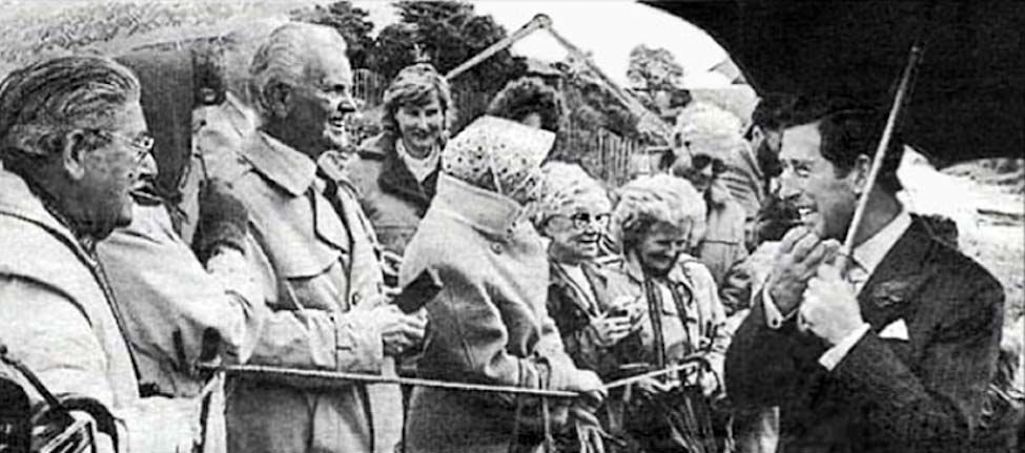
Prince Charles at Sutton Mill Dam - facing him is the late Eric Coffey, then secretary of Sutton Historic Society

Prince Charles at Sutton Mill Dam - facing him is the late Eric Coffey

Prince Charles at Sutton Mill Dam
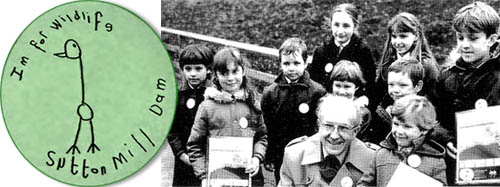
In 1984 Sutton Mill Dam Action Group raised £400 to pay for the Groundwork Trust to design and produce special nature packs for schoolchildren. Pictured is Professor A. D. Bradshaw of Groundwork at the Mill Dam presenting youngsters with the packs. These were designed to make the kids aware of the wildlife potential of the historic Dam. Also established was the Friends of Groundwork (FROGS). The campaigners did not want to allow fishing, due to the danger of wildfowl being snared on discarded hooks. However Sidac had already awarded fishing rights to East Sutton Angling Club and the fishermen did a lot of good work to keep the Dam clean.
During 1987 thousands of trees and wildflowers were planted by the Community Landscape Unit of St.Helens Council, with the assistance of 400 local schoolchildren. They also made footpaths and steps and built a drystone wall around the edge of the site. Dredging of the silt from the dam took place during 1988 and a boardwalk, bridge and a number of fishing platforms were installed. Floating islands were built which provided nesting sites and shelter for wildfowl.
In May 1988 Sutton Mill Dam was visited by HRH Prince Charles who was able to learn of the local community's efforts, although the official opening of the wildlife park was by Pete Waterman on July 23rd 1990. This demonstrated what community action could do and sent a message to industry that the days of dumping in Sutton's waterways were well and truly over. (See Sutton Celebrations! for more pictures)
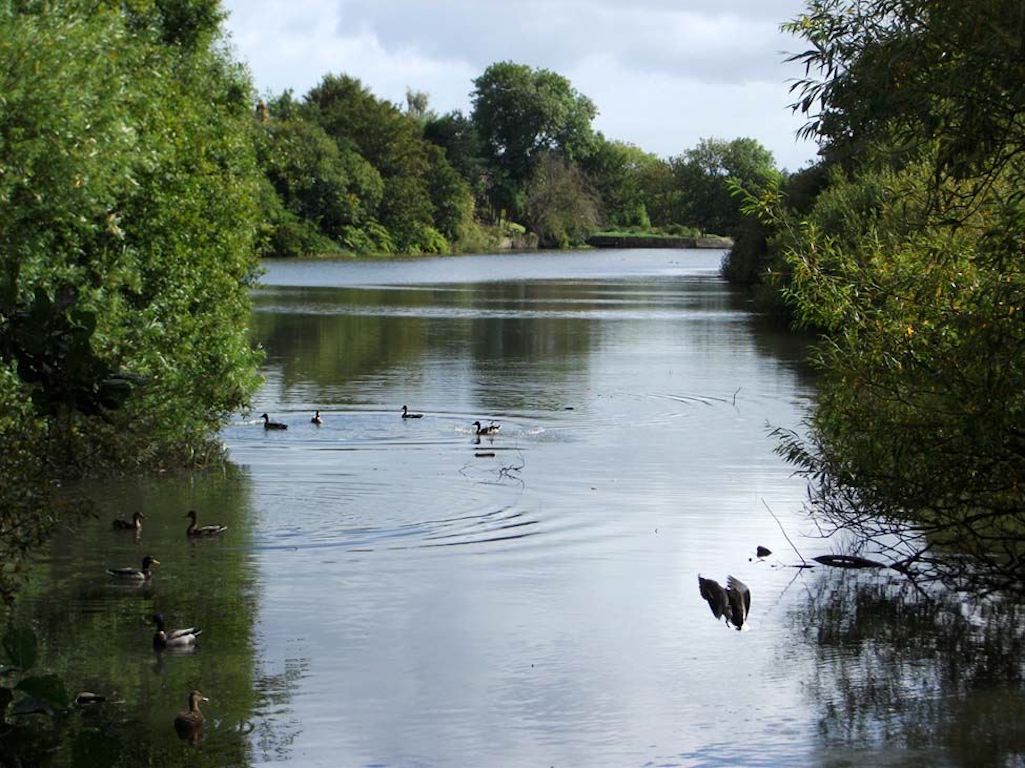
The balance in providing housing for the local community and the retention of open, green space is always a tricky one, but the powers-that-be in St.Helens seem to be doing their bit to ensure that Sutton remains a 'picturesque' location for many future generations of 'Suttonites' to enjoy.

